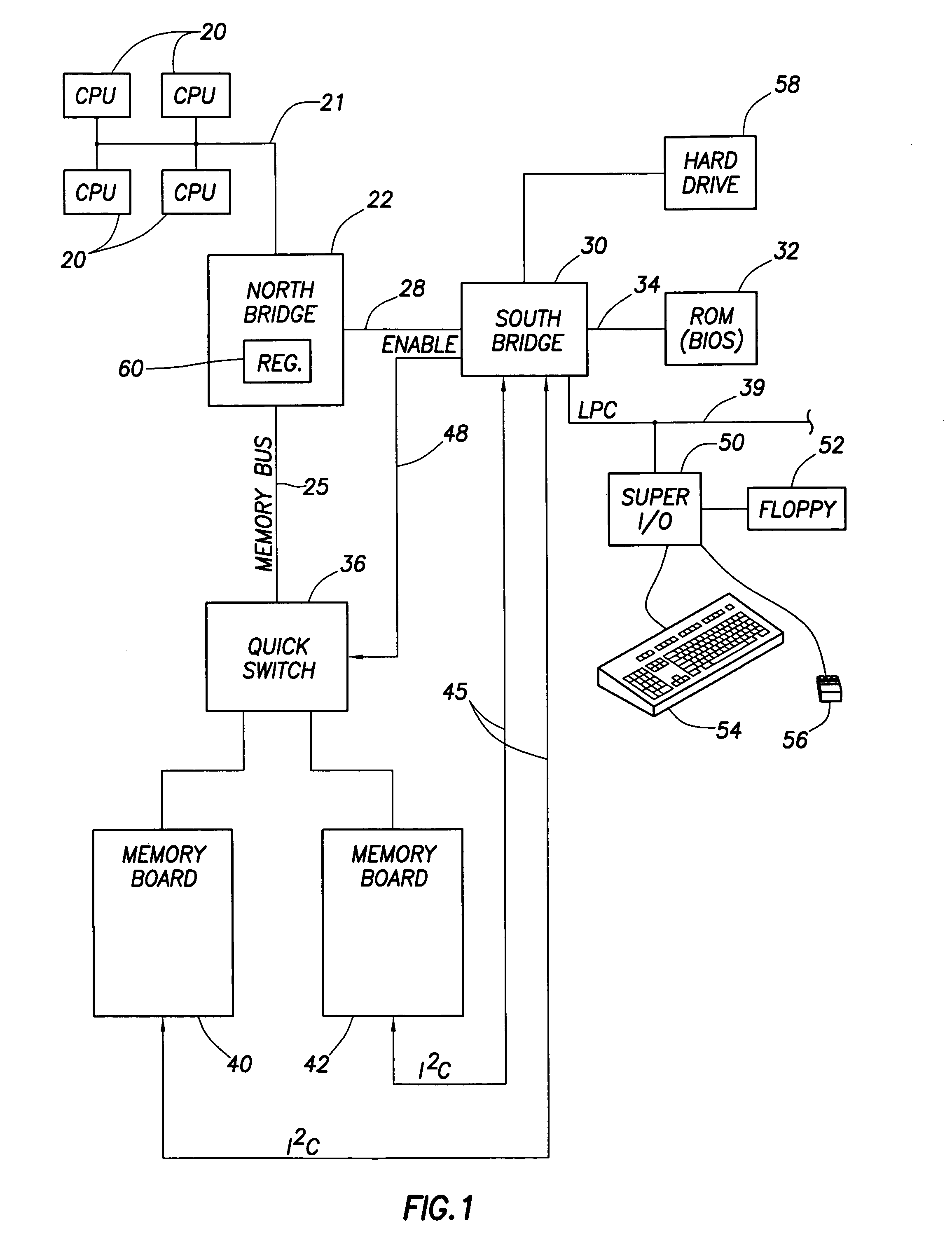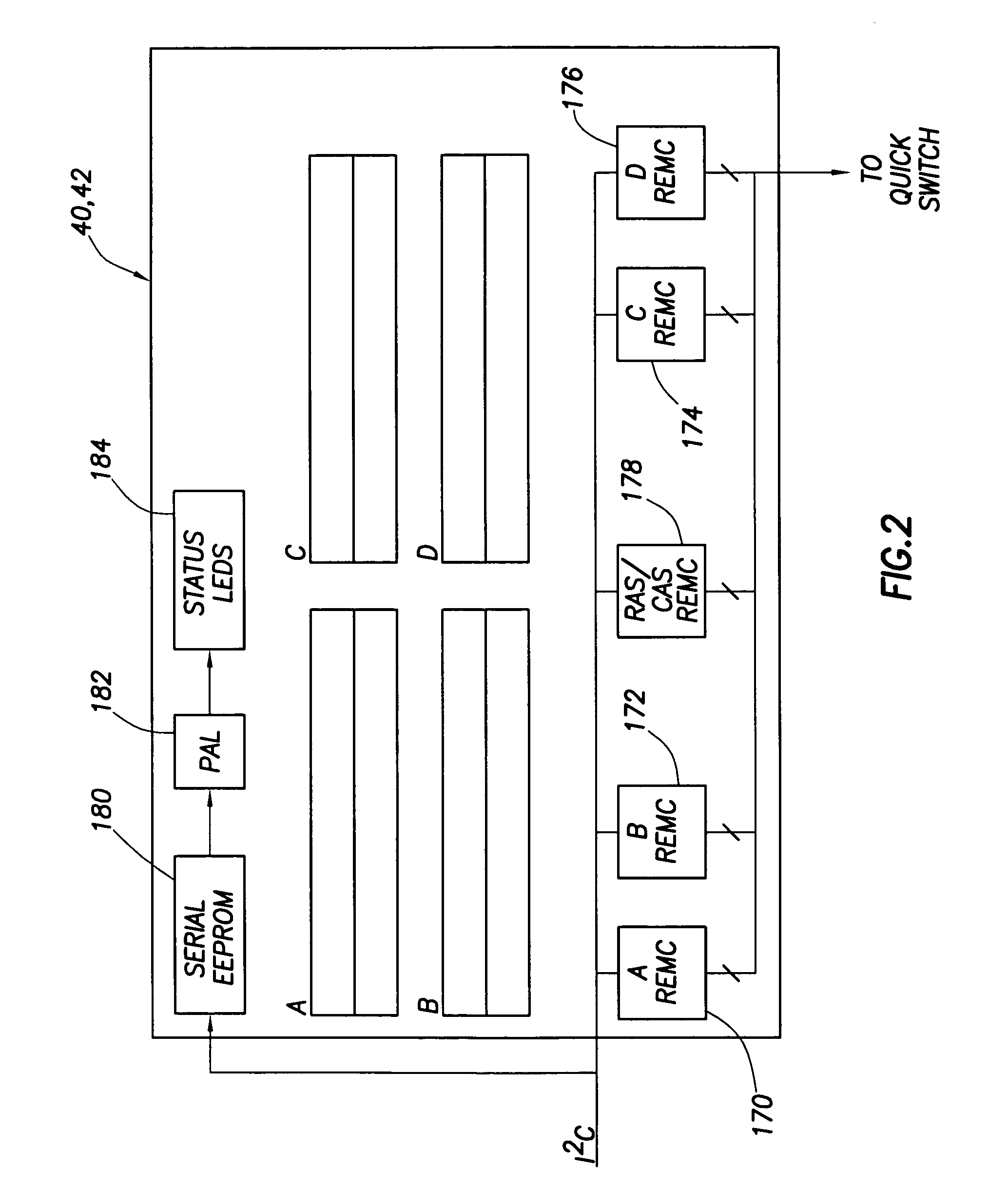Hot mirroring in a computer system with redundant memory subsystems
a computer system and subsystem technology, applied in the direction of electrical equipment construction details, fault response, instruments, etc., can solve the problems of system operations halting, process time-consuming and bothersome, and challenging maintaining a computer system fully and continuously operational
- Summary
- Abstract
- Description
- Claims
- Application Information
AI Technical Summary
Benefits of technology
Problems solved by technology
Method used
Image
Examples
Embodiment Construction
[0010]The problems noted above are solved in large part by a computer system that implements “hot mirroring.” That is, the computer system permits a user to hot plug a new memory board into the system and the system will respond by switching to a mirrored memory mode in which write cycles are performed to both memory boards (new and old). Once a new board is hot plugged into the system, the contents of the old board are copied over, in a background mode, to the new board so that both boards will have the same data. Because this background copying process may take a non-trivial amount of time and may detrimentally interfere with other system traffic (e.g., reads and writes caused by applications running on the system), the system permits a user to program a register associated with the memory controller to exert control over the relative speed of the background copying relative to other system traffic so as to trade-off the time it takes to switch over to the mirroring mode versus th...
PUM
 Login to View More
Login to View More Abstract
Description
Claims
Application Information
 Login to View More
Login to View More - R&D
- Intellectual Property
- Life Sciences
- Materials
- Tech Scout
- Unparalleled Data Quality
- Higher Quality Content
- 60% Fewer Hallucinations
Browse by: Latest US Patents, China's latest patents, Technical Efficacy Thesaurus, Application Domain, Technology Topic, Popular Technical Reports.
© 2025 PatSnap. All rights reserved.Legal|Privacy policy|Modern Slavery Act Transparency Statement|Sitemap|About US| Contact US: help@patsnap.com



